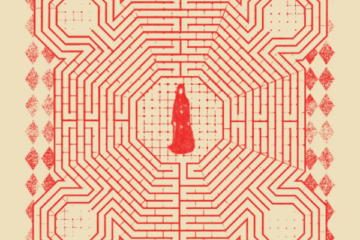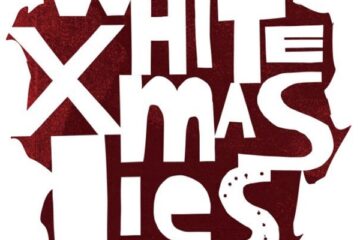
Exploring the history of a dance classic
A huge transatlantic hit in 1989, Kon Kan’s ‘I Beg Your Pardon’ was something of an embryonic mash-up, cleverly fusing classic country with contemporary dance music.
With the help of some of the key figures in the act’s history – including the original duo of Barry Harris and Kevin Wynne – Barry Page takes an in-depth look at the history of the band, including the making of their classic, award-winning single and its parent album, Move To Move.
There once was a time
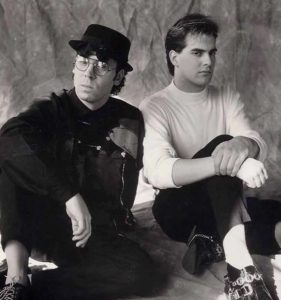 Inspired by DJ-turned-recording-artists such as Simon Harris, Tim Simenon (Bomb The Bass) and Mark Moore (S’Express), Barry Harris conceived Kon Kan in 1988. The name was derived from the term ‘Can Con’ (Canadian Content), a rule that specified that Canadian radio’s playlists had to include at least 30% Canadian music. Harris was an experienced musician, having learnt guitar, bass and piano during his formative years. However, it was after hitting the discos in the late 1970s that he was inspired to become a DJ; starting off in college radio, before progressing to the gay and straight clubs of Toronto in the early-to-mid 1980s.
Inspired by DJ-turned-recording-artists such as Simon Harris, Tim Simenon (Bomb The Bass) and Mark Moore (S’Express), Barry Harris conceived Kon Kan in 1988. The name was derived from the term ‘Can Con’ (Canadian Content), a rule that specified that Canadian radio’s playlists had to include at least 30% Canadian music. Harris was an experienced musician, having learnt guitar, bass and piano during his formative years. However, it was after hitting the discos in the late 1970s that he was inspired to become a DJ; starting off in college radio, before progressing to the gay and straight clubs of Toronto in the early-to-mid 1980s.
‘I Beg Your Pardon’ was inspired both by Pet Shop Boys’ synth-pop makeover of the country song ‘Always On My Mind’ and an increasingly prevalent use of sampling in the mid-to-late 1980s; from early Chicago house music pioneers such as Steve ‘Silk’ Hurley through to later exponents such as Todd Terry, Coldcut and M/A/R/R/S, whose highly influential hit, ‘Pump Up The Volume’, became something of a defining anthem for the sampling genre. Elsewhere, hip-hop acts such as Public Enemy and the Beastie Boys were plundering the James Brown back catalogue – notably, ‘Funky Drummer’ and ‘Funky President’ – for beats and pieces.
‘I Beg Your Pardon’ was originally recorded using an Atari computer and an E-mu SP-12 drum machine, and incorporated a slightly lo-resolution sample of Lynn Anderson’s worldwide hit, ‘Rose Garden’, which had been cut up into four pieces to fit the rhythm (hence the stuttering vocal effect). The driving synth-pop track – which strongly resembled New Order – was punctuated with samples of disco tracks such as ‘Get Up And Boogie’ (Silver Convention) and ‘Disco Nights (Rock Freak)’ (GQ), and also contained hints of Chic’s ‘Le Freak, Spagna’s Italo-Disco hit ‘Call Me’ and even Elmer Bernstein’s theme from The Magnificent Seven!
Harris drafted in a fresh-faced, 22-year old session singer named Kevin Wynne to deliver a deliberately monotone vocal that would not only complement the autobiographical, end-of-relationship narrative, but also offer a contrast to Anderson’s sprightly vocal. “When Barry and I first met, I was a few years removed from a band that I formed with my best friend in High School,” recalls Kevin Wynne. “We were a 3-piece electro-pop act that got together back in ’82 and were called En Vogue [not to be confused with the R&B act with the same name – TEC]. We did covers of the early electro stuff out of the UK – for instance, all of Depeche Mode’s Speak And Spell and A Broken Frame tracks, Yazoo, Heaven 17, Blancmange, Spandau Ballet, etc. When I first started forming my tastes, I couldn’t get enough of the British imports of the late ’70s and early ’80s. I would spend hours in the local import record store looking to get my hands on anything new. I started with punk and spent the next several years loving the growth and change that always came mostly from the UK – Echo & The Bunnymen, Siouxsie & The Banshees, Depeche Mode, Classix Nouveaux, Duran Duran, New Order… the list goes on and on.”
It’s just a matter of time
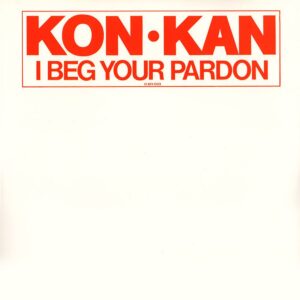
Produced and mixed by Harris, ‘I Beg Your Pardon’ was originally released in June 1988 by Toronto’s now defunct independent label, Revolving Records. The single was housed in a plain white cover and a striking sticker bearing the band’s name in big red letters was placed – apparently by Harris himself – at the top of the sleeve. “I insisted that the sticker firstly be huge so it could stand out in any record store rack,” Harris recalled on Facebook. “Then I also insisted that the sticker be placed below the opening of the jacket so it would easily be seen in a club DJ’s record crate.” Initial sales were slow, however, and the track was seemingly too obscure to receive any significant radio exposure. But fate was about to intervene with the arrival of a New York-based Atlantic Records employee – and radio promoter – named Marc Nathan, who had previously worked with the likes of Todd Rundgren and Robert Plant. Whilst holidaying in Toronto he heard ‘I Beg Your Pardon’ in a dance club and immediately knew the track had the potential to become a hit single. He excitedly approached the DJ booth to find out what the song was, and was surprised to discover that its creator was also the DJ. “It was the most immediate reaction to a song I had never heard – within a club context – to that point in my life (I was 33),” recalls Nathan. “Barry was actually DJ’ing and spinning his own record at the time, so for me it was ‘one-stop shopping’. I got to hear it, find out what it was, and meet the artist all at the same time! There was a record store around the corner from the club that specialized in 12″ vinyl. Barry had pressed ‘I Beg Your Pardon’ on a local label, and I bought six or seven copies of it to bring back to New York. I gave one to my direct boss, one to the president of the company, and mailed four of them out to stations I had a close relationship with. Two of those stations were the Top 40s in Houston, Texas (KKBQ and KRBE) and both added the record [to their playlists].”
It was received particularly enthusiastically in Houston and, despite some initial scepticism, it was eventually picked up by Atlantic Records (according to Harris, the band had also been very close to signing with Vendetta Records, a subsidiary of A&M). Their first job was to organise the sample clearance with CBS for Lynn Anderson’s ‘Rose Garden’. “At the time I was still a promotion man for Atlantic (I later segued into A&R), so at the time I had nothing to do with the preparation for US release other than getting it ready to go on the radio,” says Nathan. “Between the legal department, the A&R department, and the management (Kushnick/Passick), it got worked out. To this day I don’t know what the actual arrangement was!”
With the legalities sorted out, the record company then persuaded Harris to re-recruit singer Kevin Wynne (who had initially been paid a flat fee for his vocal), allowing them to market Kon Kan as a duo – with his boyish good looks, Wynne was perfect frontman fodder. Harris had originally envisioned Kon Kan as a one-off solo vehicle, but eventually warmed to the idea. Wynne picks up the story: “It was a few months after we recorded [‘I Beg Your Pardon’] that I got a call from Tom Gerenscer (owner of the basement studio that we recorded in, and also the keyboard player in En Vogue). He told me to stop by because he had a copy of my record. My first reaction was, ‘What record?!’ I truly had forgotten about the session! After that day, everything started snowballing.”
The single was eventually re-released by Atlantic towards the end of 1988 and quickly took off, as Wynne recalls: “It [fast became] a local club hit. Toronto radio station CFNY were playing it steadily, and then we started to hear about pockets in the US where we were charting. Houston, Texas, of all places, was mad about Kon Kan. The real surprise was in how this thing took off the way it did!” True to the times, it was released in an array of formats and versions (the instrumental mix, notably, recalled vintage OMD, with its charming choral flourishes). Boosted by a cheap-looking, but effective promo video, the single eventually climbed to No.15 in the Billboard chart, but its popularity also spread further afield. It hit the Top 5 in several countries, including the UK, and it later earned the duo a well deserved Juno award – the equivalent of a Grammy in Canada – for Best Dance Recording in 1990.
The need to hide away
Whilst there were obvious promotional duties to fulfil, the pressure was also on Kon Kan to deliver an album to capitalize on the single’s huge success. “Of course there was a lot of pressure,” confirms Harris, “though at the time I had no idea just how far ‘I Beg Your Pardon’ was really going to go – remember, hindsight is 20/20. We had to finish an LP. We got asked to do ‘Top of the Pops’ while in LA but had to finish the LP, so I was forced to turn down that offer – something I now regret. It would be amazing to see something like that now on YouTube!”
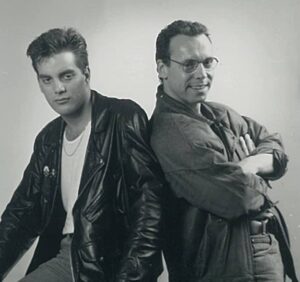
“We worked with a very talented bunch of people on Move To Move,” recalls Wynne. “Everyone involved, including myself, had creative input on some level. I contributed lyrics in a few spots, but this was primarily Barry’s baby.” Aside from contributing lyrics, Wynne performed lead vocals on six of the album’s nine cuts, but it was Harris who sang lead on the two ballads. ‘Am I In Love’ was a Sade-influenced slice of sophisti-pop, while the album’s title cut, ‘Move To Move’, had been co-written by renowned songwriter Jon Lind (who had previously co-penned both Madonna’s ‘Crazy For You’ and Earth, Wind and Fire’s ‘Boogie Wonderland’). “I did originally sing and record ‘Am I In Love’,” adds Wynne. “And there’s even a version somewhere of my vocals on ‘I Can’t Answer That’. But, for one reason or another, the tracks weren’t working with my vocals. Barry had done a great job with ‘Move To Move’ and we decided he was better suited for ‘Am I In Love’ as well.”
Aside from Jon Lind, Harris was introduced to other songwriters, too. These included Dennis Matkosky, whose songs had been featured in films such as Flashdance, and Bob Mitchell (a name that would become familiar to fans of Kon Kan over the next few years). “When we first met, [Bob Mitchell’s] biggest success was ‘The Flame’ by Cheap Trick [a Billboard number one hit in 1988 – TEC]. I can’t remember exactly how I met Bob – I think it was perhaps through our publishers. I do remember where, though – it was in LA. I liked Bob immediately because he got me being more dance and European-influenced. No-one in the US that I worked with really understood what that influence meant. I think his publisher flew him in to write with me… I really liked his creativity and originality. He challenged me, took my ideas to a different place and l loved that. We got along well immediately and I learned quite a bit from him!”
In addition there was an excellent cover version of ‘Bite The Bullet’ (which had originally been recorded by the band’s compatriots, They Never Sleep, in 1987) and some Cameo-influenced funk in ‘I Can’t Answer That’. Whilst Harris was seemingly unbound by formulaic constraints, there was an inevitable retread of the ‘I Beg Your Pardon’ cover/original blueprint included for good measure: The idea for ‘Puss N’ Boots/These Boots (Are Made For Walking)’ came to Harris whilst out jogging through Hollywood Boulevard in LA. Since it wasn’t possible to employ Nancy Sinatra herself to redo her famous vocal for the project, a soundalike was brought in to recreate the part. New York rapper BX Style Bob – a member of Ice T’s Rhyme Syndicate – contributed the song’s rap, and recreated elements of Led Zeppelin’s ‘Immigrant Song’ were added to the mix. (Interestingly, many hip-hop acts, such as the Beastie Boys, had sampled the same band’s track, ‘When The Levee Breaks’, which in those days was almost as ubiquitous a loop as James Brown’s ‘Funky Drummer’).
Move To Move
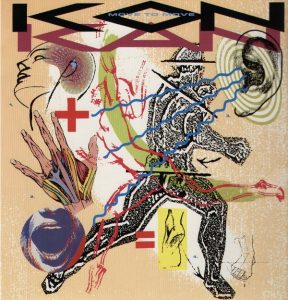
The Move To Move album was eventually released in May 1989, and its sleeve was created by Mick Haggerty, who had completed design work on albums such as Once Upon A Time (Simple Minds), The Pacific Age (OMD) and Never Let Me Down (David Bowie). The album itself was a diverse collection of tracks, showcasing a number of clear influences; including funk (Cameo), hip-hop (Grandmaster Flash), New Wave (Blondie) and rock (Led Zeppelin). There was also a number of synth-pop influences such as New Order, Depeche Mode and Pet Shop Boys, as Harris confirms: “All of these UK acts influenced me on the Move To Move LP. Erasure would have been an influence – even Kraftwerk – but also a few American ones as well.” And, testament to his earlier career as a DJ, there was of course a strong undercurrent of dance music running through the album. Indeed, there was a veritable onslaught of dance acts permeating the charts whilst ‘I Beg Your Pardon’ was steadily making its ascent to the UK Top 5 in the spring of 1989. Amongst these acts were the highly influential Soul II Soul, a Marshall Jefferson-produced Ten City, Coldcut, The Beatmasters and De La Soul, who were bringing their own blend of humour and beats to the hip-hop scene.
Another highlight of the album was the quirky ‘Glue And Fire’, best described as Coldcut being fronted by New Order’s Bernard Sumner! In fact, much of the album had been mixed by Alan Meyerson, whose clients had included New Order (these days he is more known for his film score mixing).
Whilst ‘I Beg Your Pardon’ was an undoubted masterpiece in editing, the album’s epic opening track is equally deserving of plaudits. ‘Harry Houdini’ boasted an incredible 3-minute intro – pretentiously titled ‘Arts’ In D Minor’ – which recalled the previous year’s Pet Shop Boys classic, ‘Domino Dancing’. Lifted from the duo’s third studio album, Introspective, this Top 10 hit had been produced by Lewis Martineé, a name synonymous with the freestyle genre of music (see Shannon, Lisa Lisa & Cult Jam, Exposé et al), and something of a huge influence on Harris. An edited version was released as the second single but failed to chart on both sides of the Atlantic.
‘Puss N’ Boots’ fared slightly better, peaking at No.58 on the Billboard chart, and earning the duo another Juno award nomination for Best Dance Recording (Jane Child’s ‘Don’t Wanna Fall In Love’ won the award in March 1991). However, fourth single ‘Move To Move’ failed to chart, and Kon Kan were on the verge of becoming relegated to the annals of one-hit wonderdom. “It was a bit disappointing, but not altogether surprising,” says Wynne. “I think I knew from the start that we didn’t have another ‘Beg’ on that album – it was a very tough act to follow!”
Kon Kan on tour
Whilst future hits eluded Kon Kan, as a live act they enjoyed considerable success in US and Asian territories during the tail end of 1989.
“I’ll always remember the fall of ’89 for a number of what you might call ‘near misses’, recalls Wynne. “After spending a few days in San Francisco – the most amazing city in North America – we flew out to Phoenix on a Monday afternoon. The next day, as I was relaxing in my hotel room getting ready for a show, I turned on the TV to watch a World Series game. It was the day the earthquake struck – the area immediately around the hotel we had just left was devastated!
“We had a little time off between Phoenix and our next show in San Juan, Puerto Rico. Barry went back to Toronto [and tour manager] Skip Gildersleeve and I went straight to San Juan for a week’s holiday. A couple [of] days before we got there, Hurricane Hugo made a real mess of the island – another close call! Skip and I almost lost our rented Jeep that week when we tried to drive on the beach too close to high tide. Luckily, a tow truck came along and saved us!
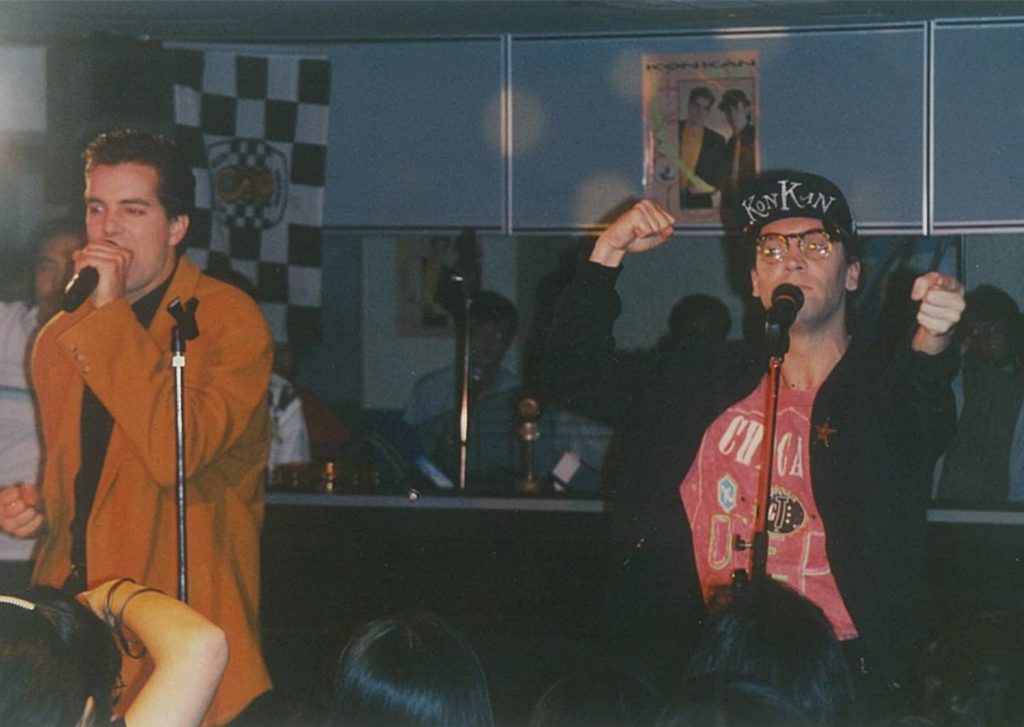
“We were in Houston, Texas, when there was a massive explosion at an oil refinery. It rocked the city like an earthquake. Luckily for us, we were on the other side of the city!
“In November, we were off to Southeast Asia for six weeks and visited several countries. One night, as I’m watching the news in my hotel room in Jakarta, Indonesia, the headline story is of a coup taking place in the Philippines. Well, Manila just happened to be our next stop on the tour…in two days! I immediately called Skip into my room and just stood there pointing at the TV saying, ‘um, I don’t want to go there!’. So he gets right on the phone with the people from the label in Jakarta, who in turn contact our people in the Philippines [and] they say, ‘Don’t worry, this kind of thing happens here all the time – things will settle in a day or so, and we can go ahead with the schedule.’ That’s not how it went! It turned out to be a very dangerous situation and our trip there was cancelled. The good news was that we ended up with a few extra days in Jakarta, with a little time off, so I took advantage and hit the golf course!
“Overall, it was the trip of a lifetime, and I ended up going back to that part of the world several times over the next few years.”
Joining Wynne and Harris on tour was Torontonian singer Kim Esty, who explains how she got the job of backing singer: “I was signed to indie label Power Records, and had a few singles already out at the time that were making some noise – a little buzz, if you will. Barry knew a mutual promoter that was associated with the label, and was in need for a back-up singer for the South East Asian tour. So we met – I think it was at the Tasmian Bar, downtown Toronto – and hit it off right away!
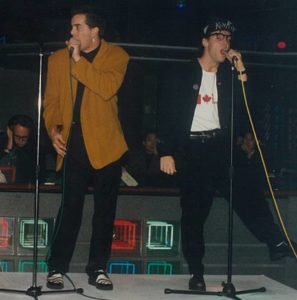
“It definitely was a surreal experience, especially for me. When we would walk off the plane, hundreds of kids were welcoming us at the airport. They would be in hysterics seeing Barry and Kevin, handing us gifts [and] notes. Many of the shows would stand out due to the energy and [the] love the audience had for Barry and Kevin – it was very sweet. A few shows were very restricted. I think it was in Malaysia where we were instructed not to dance, touch any of the audiences’ hands; also not to encourage the crowd to clap, scream, participate with us in any form, due to their rules. I just remember doing the show and it was a complete different energy from any previous show – all the kids sitting like well behaved children, some in a buffalo stance, some with hands perfectly placed on their laps, and also I remember seeing security guards near the doors. It was different, especially because we loved to interact with the kids during the shows.
“I loved singing the hit, ‘I Beg Your Pardon’. The crowd went insane when the first few chords played – very exciting! It’s really surreal being on stage singing a song everyone knows and loves! It was such a great time in my life and I’m so grateful Barry gave me the opportunity – he taught me so much about the industry, about ‘always look like you’re a star’. The tour was definitely a defining period in my life where being on stage, singing hit songs was something I longed for! Plus being spoiled staying at 5-star hotels, dinners every night with so many interesting music executives. I felt like a million bucks and I was just the back-up singer!”
Turning the pages of history
The huge international success of ‘I Beg Your Pardon’ was enough to persuade Atlantic Records to bankroll a second Kon Kan album. However, by the time the duo had picked up their Juno Award in March 1990 for Best Dance Recording, Harris had already decided to record the follow-up on his own. This wasn’t a great surprise, since it had originally been Harris’s intention to utilise Kon Kan as a solo vehicle, and he had already proven himself as an effective lead vocalist on the Move To Move album. There was a bit of disappointment,” confirms Wynne. “I felt that we may have had some good music still ahead of us as a duo. That said, I was happy to move on with other things at the time. Barry and I came from two very different places, and it worked in that short window. There were never any long-term discussions – we just ‘rolled with it’. I had thoughts of a solo career at the time, and hooked up with a Toronto indie label to record some stuff. All that ended up coming out of it was one single [‘Last Chance’] that the world never heard, but to this day it remains – to me – the best work I ever did. I worked on it with my best friend that I mentioned earlier… I’ve never been too far removed from the music industry. Right after Kon Kan I was in the Club business for a few years. I then moved into the business of design, packaging and manufacturing of CDs and DVDs. That evolved into graphic design and print, which is where I am today. Over the years I still get the odd opportunity to sing. In fact, a few years ago I got together with a few friends from the High School days and we put a set together for a friend’s 40th birthday party – it was the most fun I’d had in years! We contemplated taking it further, but that never came to pass.”
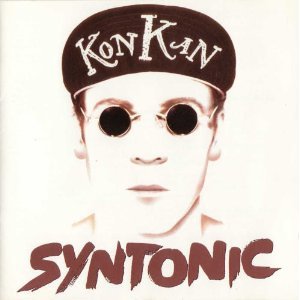
Harris worked on the follow-up to Move To Move with a number of producers, including John Luongo, a legendary figure from the disco era. Unfortunately, both the excellent 1990 album, Syntonic, and its lead-off single, ‘Liberty’, were not hits, and Harris was quietly dropped by the label (see our separate Lost Albums feature for a detailed account of this period). Avuncular A&R man, Marc Nathan (who had been fired by Atlantic in April 1991 following an altercation with the record company’s president), stayed loyal to Harris and, in his new role with management company Between the Ears, helped to secure a new deal for Kon Kan with Hypnotic, a subsidiary of A&M Records. Vida!… eventually appeared in 1993, but was only released in Canada…a clear sign of how far Kon Kan had fallen since their 1989 heyday. Lacking the big budget of a major recording label, it was a considerably more organic album than its two predecessors. Combining rockier tracks with more dance-orientated material, it was something of a mixed bag, and much of Kon Kan’s trademark sound had disappeared by this time. Gone were the samples and freestyle flourishes and, significantly, gone too were the ‘songs within songs’ that had made their name. On board for the songwriting ride once again was Bob Mitchell, and the pair once again produced some interesting, if not altogether stimulating, material. Lead-off single ‘Sinful Wishes’, inspired in part by the New Order classic, ‘Bizarre Love Triangle’, was a traditional-sounding Kon Kan track, albeit with a rockier production (there was, however, a dance mix included on the album for contrast). Another highlight was the reggae-tinged second single ‘S.O.L.’, which featured local musician Crash Morgan on vocals. (Tragically, Morgan’s life was cut short after suffering a heart attack on stage whilst performing with Canadian rock band, Big Sugar, in 1995).
Other highlights on the album included a contemplative ‘January Man’ (which featured Coney Hatch guitarist Carl Dixon on mandolin) and ‘Mr Fleming’, which included a typically engaging lyric. Not so memorable were an unnecessary retread of ‘Move To Move’ and a rather pedestrian run-through of David Bowie’ ‘Moonage Daydream’, both as far removed from Kon Kan’s electronic/dance sound as you could imagine. The most electronic track was reserved for the end of the album, with epic instrumental closing track, ‘When Hope Is Gone’, seemingly bringing the act’s career full circle; almost like a companion piece to ‘Arts’ In D Minor’. These days the album is a highly sought-after collector’s item, with some copies changing hands for over £100.
Heading to LA
Having devoted five years of his life to Kon Kan, Barry Harris returned to his house music roots and formed Top Kat in 1994, a collaboration with fellow DJ and Canadian compatriot, Terry “TK” Kelly. A series of independently released singles and an album, Hi-Energy House, followed, which included a revisit of ‘I Beg Your Pardon’ titled ‘Pardon Me/Rose Garden’. Following this short-lasting project, Harris turned his attention to the burgeoning Eurodance market that had spawned the likes of Culture Beat, Snap, Haddaway and 2 Unlimited. Featuring Kimberley Wetmore on vocals and Rachid Wehbi on keyboards, Outta Control released a self-titled album in 1996, and the Kon Kan brand was utilised once again on a version of ‘Sinful Wishes’ from the Vida!… album.
Following a one-off single (‘I Can’t Take The Heartbreak’) with Killer Bunnies in 1997, Harris moved to LA in 1998 and formed what would become a fruitful remix/production partnership with Chris Cox, collectively known as Thunderpuss. Between 1998 and 2004 the prolific duo remixed/produced songs for the likes of Madonna, Pet Shop Boys, Eurythmics, Donna Summer, Whitney Houston and Janet Jackson, with numerous tracks hitting the top spot on Billboard’s dance chart. Concurrent to his remixing activities, Harris also resumed his DJ’ing career, securing regular employment in prestigious clubs in New York, LA, San Francisco and other major cities. He was also a popular draw at various Circuit parties around the world, and particularly successful on a Japanese tour in 2000.
Harris emerged from a lengthy break from the music industry in 2011, and jamming sessions with long time friend, Antony Cook (who had played on Vida!…), led to the formation of the more rock-orientated Sick Seconds in 2012. With Harris on lead vocals, a strong 8-track album was released the following year, and once again featured material co-written by Bob Mitchell. Something of a cathartic exercise for Harris, ‘The Bus’ saw him reflecting on his musical journey and being ‘lost in a land of make believe’, ‘Headin’ to LA’ was imbued with reminiscences about his Thunderpuss days and West Coast adventures, while ‘She Couldn’t Help Herself’ paid tribute to a close friend who had sadly succumbed to depression.
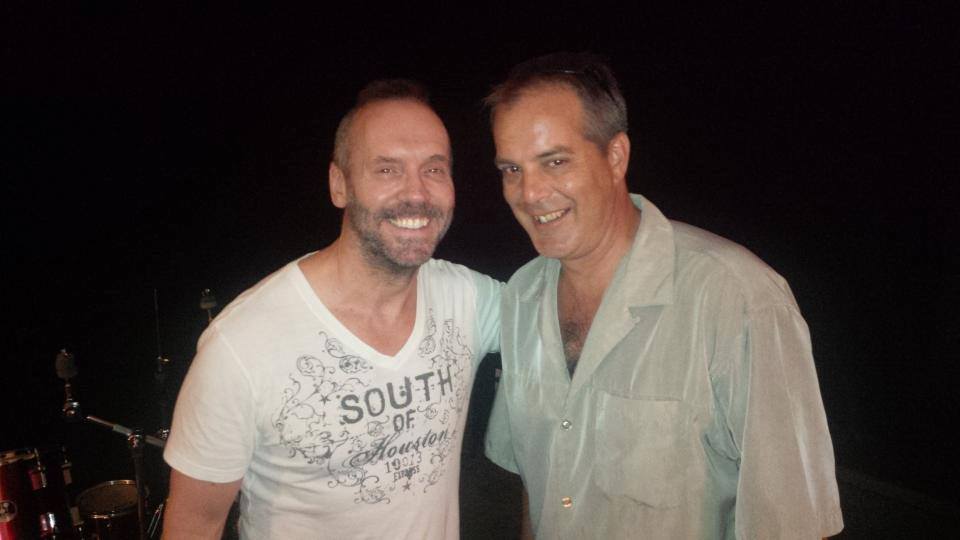
Pardon me
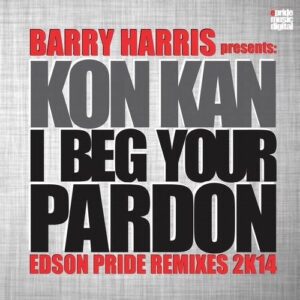
The popularity of ‘I Beg Your Pardon’ shows no sign of abating, and countless versions of the act’s signature song have been issued since its original release. “I’m often asked if Kon Kan will ever perform again,” Wynne told us in 2012, “and over the years I’ve always had the same answer: ‘Ya never know!’ It’s not something Barry and I have ever talked about, but I’m sure he gets asked the same thing.” Somewhat surprisingly, less than 18 months later, Kon Kan announced their reformation in June 2013, with a view to producing some original material. This never materialised, but the duo did produce some brand new versions of ‘I Beg Your Pardon’ – complete with new vocals – to commemorate the song’s 25th anniversary. With Harris resuming his dual career as a DJ and remixer in recent years, the future of Kon Kan looks uncertain. However, Harris and Wynne did unite for an informative radio interview in January 2017 and, with the 30th anniversary of Move To Move fast approaching, there could well be further opportunities to ‘come along and share the good times’.
The Electricity Club gives its warmest thanks to Barry Harris, Kevin Wynne, Marc Nathan and Kim Esty.
www.facebook.com/konkanofficial/
This article was originally published in February 2012 and updated in August 2018.
Text and interviews by Barry Page.
Photos, courtesy of Barry Harris and Kevin Wynne.
- QUEEN’S MACHINES – How Music Changes Through The Years (1979 – 1984) - July 25, 2021
- SUGAR RUSH – The Story of ‘Sugar Tax’ - May 7, 2021
- Survival – The Story Of ‘Machine and Soul’ - April 30, 2021



